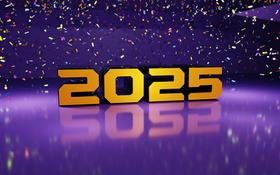For the 2025-26 school year, there are 8 public elementary schools serving 3,934 students in Graham, NC.
The top ranked public elementary schools in Graham, NC are River Mill Academy, Alexander Wilson Elementary School and Southern Alamance Middle School. Overall testing rank is based on a school's combined math and reading proficiency test score ranking.
Graham, NC public elementary schools have an average math proficiency score of 40% (versus the North Carolina public elementary school average of 50%), and reading proficiency score of 38% (versus the 49% statewide average). Elementary schools in Graham have an average ranking of 3/10, which is in the bottom 50% of North Carolina public elementary schools.
Minority enrollment is 57% of the student body (majority Hispanic), which is equal to the North Carolina public elementary school average of 57% (majority Black and Hispanic).
Best Public Elementary Schools in Graham, NC (2025-26)
School
(Math and Reading Proficiency)
(Math and Reading Proficiency)
Location
Quick Facts
Rank: #11.
River Mill Academy
Charter School
(Math: 73% | Reading: 67%)
Rank:
Rank:
9/
Top 20%10
235 Cheeks Lane
Graham, NC 27253
(336) 229-0909
Graham, NC 27253
(336) 229-0909
Gr: K-12 | 768 students Student-teacher ratio: 17:1 Minority enrollment: 35%
Rank: #22.
Alexander Wilson Elementary School
(Math: 49% | Reading: 46%)
Rank:
Rank:
5/
Bottom 50%10
2518 Nc 54
Graham, NC 27253
(336) 578-1366
Graham, NC 27253
(336) 578-1366
Gr: PK-5 | 602 students Student-teacher ratio: 15:1 Minority enrollment: 48%
Rank: #33.
Southern Alamance Middle School
(Math: 44% | Reading: 42%)
Rank:
Rank:
4/
Bottom 50%10
771 Southern High Road
Graham, NC 27253
(336) 570-6500
Graham, NC 27253
(336) 570-6500
Gr: 6-8 | 861 students Student-teacher ratio: 21:1 Minority enrollment: 44%
Rank: #44.
South Graham Elementary School
(Math: 37% | Reading: 35%)
Rank:
Rank:
3/
Bottom 50%10
320 Ivey Road
Graham, NC 27253
(336) 570-6520
Graham, NC 27253
(336) 570-6520
Gr: PK-5 | 493 students Student-teacher ratio: 15:1 Minority enrollment: 83%
Rank: #55.
B. Everett Jordan Elementary School
(Math: 30-34% | Reading: 30-34%)
Rank:
Rank:
2/
Bottom 50%10
5827 Church Road
Graham, NC 27253
(336) 376-3673
Graham, NC 27253
(336) 376-3673
Gr: K-5 | 343 students Student-teacher ratio: 14:1 Minority enrollment: 48%
Rank: #66.
North Graham Elementary School
(Math: 20-24% | Reading: 20-24%)
Rank:
Rank:
1/
Bottom 50%10
1025 Trollinger Road
Graham, NC 27253
(336) 578-2272
Graham, NC 27253
(336) 578-2272
Gr: PK-5 | 368 students Student-teacher ratio: 14:1 Minority enrollment: 83%
Rank: #77.
Graham Middle School
(Math: 19% | Reading: 22%)
Rank:
Rank:
1/
Bottom 50%10
311 E Pine Street
Graham, NC 27253
(336) 570-6460
Graham, NC 27253
(336) 570-6460
Gr: 6-8 | 469 students Student-teacher ratio: 15:1 Minority enrollment: 89%
Rank: #88.
Ray Street Academy
Alternative School
(Math: ≤10% | Reading: 11-19%)
Rank:
Rank:
1/
Bottom 50%10
609 Ray Street
Graham, NC 27253
(336) 570-6644
Graham, NC 27253
(336) 570-6644
Gr: 6-12 | 30 students Student-teacher ratio: 2:1 Minority enrollment: 53%
Frequently Asked Questions
What are the top ranked public elementary schools in Graham, NC?
The top ranked public elementary schools in Graham, NC include River Mill Academy, Alexander Wilson Elementary School and Southern Alamance Middle School.
How many public elementary schools are located in Graham?
8 public elementary schools are located in Graham.
What is the racial composition of students in Graham?
Graham public elementary schools minority enrollment is 57% of the student body (majority Hispanic), which is equal to the North Carolina public elementary schools average of 57% (majority Black and Hispanic).
Which public elementary schools in Graham are often viewed compared to one another?
Popular comparisons of public elementary schools in Graham include: B. Everett Jordan Elementary School vs. Alexander Wilson Elementary School, South Graham Elementary School vs. North Graham Elementary School, Alexander Wilson Elementary School vs. B. Everett Jordan Elementary School
Recent Articles

Texas Schools Enrollment Trends & Policy in 2025
Latest data and policy changes on Texas public school enrollment growth, funding, and virtual education in 2025.

Financial Aid & Hidden Costs in Public Schools
Learn about financial aid and hidden costs in public schools. Discover what parents should budget for beyond tuition-free education.

NYC Schools Still Most Segregated in 2025
Despite reforms, New York City schools remain the most segregated in the U.S. in 2025. Here’s what parents and educators need to know.
